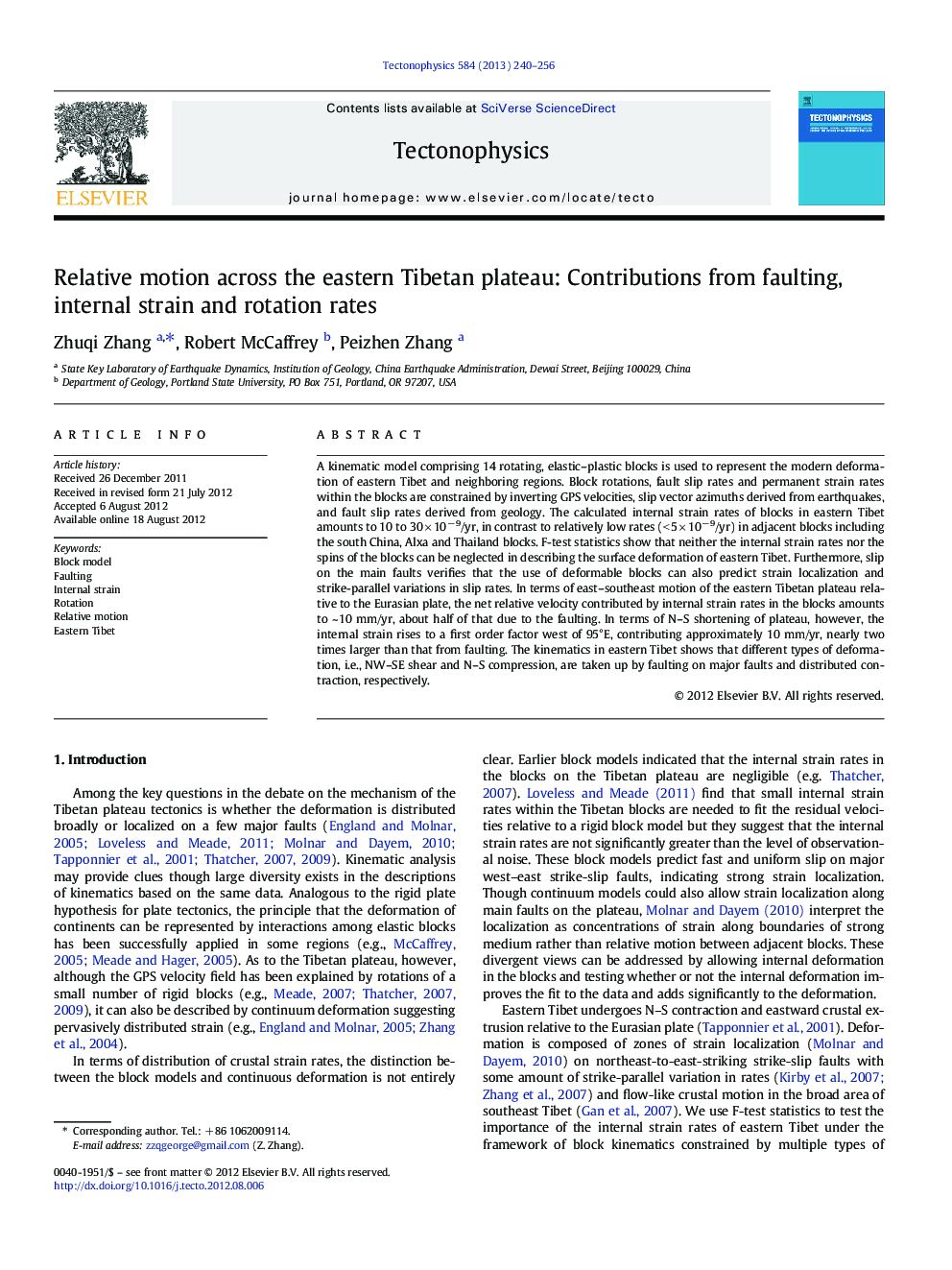| Article ID | Journal | Published Year | Pages | File Type |
|---|---|---|---|---|
| 4692451 | Tectonophysics | 2013 | 17 Pages |
A kinematic model comprising 14 rotating, elastic–plastic blocks is used to represent the modern deformation of eastern Tibet and neighboring regions. Block rotations, fault slip rates and permanent strain rates within the blocks are constrained by inverting GPS velocities, slip vector azimuths derived from earthquakes, and fault slip rates derived from geology. The calculated internal strain rates of blocks in eastern Tibet amounts to 10 to 30 × 10− 9/yr, in contrast to relatively low rates (< 5 × 10− 9/yr) in adjacent blocks including the south China, Alxa and Thailand blocks. F-test statistics show that neither the internal strain rates nor the spins of the blocks can be neglected in describing the surface deformation of eastern Tibet. Furthermore, slip on the main faults verifies that the use of deformable blocks can also predict strain localization and strike-parallel variations in slip rates. In terms of east–southeast motion of the eastern Tibetan plateau relative to the Eurasian plate, the net relative velocity contributed by internal strain rates in the blocks amounts to ~ 10 mm/yr, about half of that due to the faulting. In terms of N–S shortening of plateau, however, the internal strain rises to a first order factor west of 95°E, contributing approximately 10 mm/yr, nearly two times larger than that from faulting. The kinematics in eastern Tibet shows that different types of deformation, i.e., NW–SE shear and N–S compression, are taken up by faulting on major faults and distributed contraction, respectively.
► We use F-test to test the importance of block kinematics in the eastern Tibet. ► Blocks on the eastern Tibetan plateau deform faster than that in adjacent areas. ► Moderate and strike-parallel varying slip rate is found on major strike-slip faults. ► Plateau extrusion due to internal strain is comparable to that due to faulting. ► The internal strain is the first order factor for N–S shortening across the plateau.
